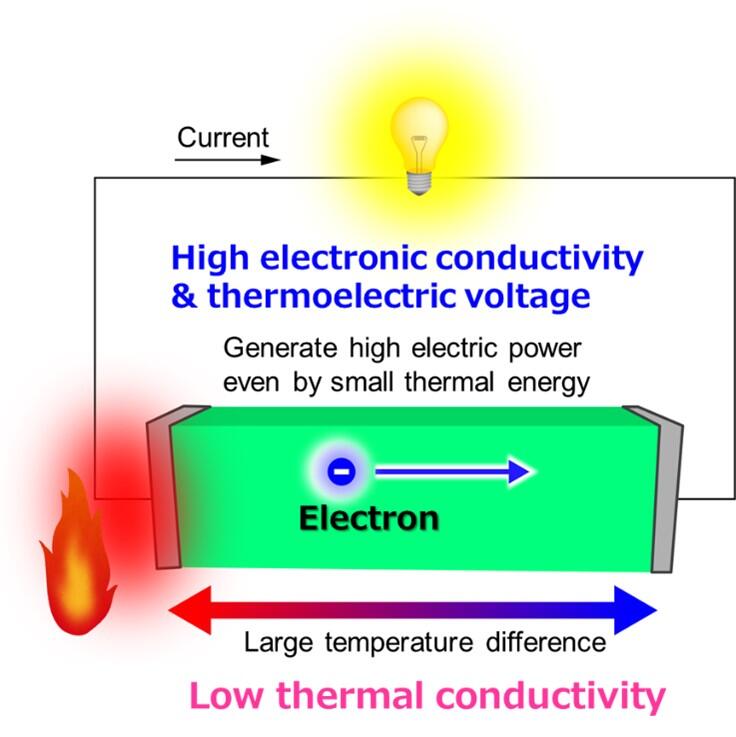A research group comprised of graduate student Xinyi He of the Department of Materials Science and Engineering, School of Materials and Chemical Technology, Tokyo Institute of Technology, Associate Professor Takayoshi Katase and Professor Toshio Kamiya of the Laboratory for Materials & Structures, Institute of Innovative Research, Tokyo Institute of Technology, and Honorary Professor Hideo Hosono of the Materials Research Center for Element Strategy, Tokyo Institute of Technology, has successfully improved thermoelectric conversion (ZT) efficiency, the process of converting heat into electrical energy, by 30-fold simply by adding tellurium (Te) to polycrystalline tin selenide (SnSe) and firing it.

Provided by Tokyo Institute of Technology
The concept of thermoelectric conversion is currently garnering interest as a technology for recycling waste heat into electrical energy. SnSe in particular shows great promise as a possible material for high performance thermoelectric conversion, but one problem with the material is that a complex manufacturing process is required to achieve high performance in a practical polycrystal. The research group found that they were able to balance high electrical conductivity with low thermal conductivity simply by adding Te2-, which has the same valence as Se2-, to SnSe polycrystals to form a solid solution called Sn (Se,Te).
The group also were able to describe the underlying mechanism through quantum calculations, and found that the Se in the SnSe crystal was replaced by the larger Te forming a weak Sn-Te bond, but that the bond with the Te is easily dissociated, spontaneously releasing the Sn, thereby forming a hole that facilitates electrical conduction. The group found that as a result of the process, electrical conductivity increases 10 times, while the weak Sn-Te bond interferes with thermal conductivity, reducing it to one third. This enables a ZT that is 30 times higher than SnSe.
Accordingly, they found that it is possible to achieve both high electrical conductivity and low thermal conductivity at the same time by adding Te to SnSe, thereby greatly increasing ZT.
According to Associate Professor Katase, "Material properties depend strongly on their constituent elements and crystalline structures, and those properties can be improved significantly with the addition of other elements. Therefore there is still unlimited potential for the development of better materials. Moving forward, we hope to achieve materials with even greater thermoelectric performance by making full use of cutting edge computer simulations to design materials using ideas that shatter conventional wisdom."
■ Thermoelectric conversion: a technology in which heat energy is added to conductors and semiconductors that carry electricity, such as metals, applying a temperature difference that generates voltage, and then harvesting that electrical energy.
■ Solid solution: A solid comprised of a single-phase compound in which two or more substances with different chemical compositions are mixed equally.
This article has been translated by JST with permission from The Science News Ltd.(https://sci-news.co.jp/). Unauthorized reproduction of the article and photographs is prohibited.




